
Early Gymnastics in the World
Lee Bjella, 2015
Physical activities such as dance, games, military feats, hunting and races, have always been a part of human activity.
Ancient China was generally a peaceful, docile civilization but they had a medical gymnastics called Cong Fu, which used certain body movements to keep breathing regulated and organs functioning.
India was a mystical, dreamy civilization that did not indulge in organized sports or instruction. The Egyptians, Assyrians, Babylonians, and Hebrews were not hampered "...by mystic philosophy and ancestor worship". They led active lives, which we can see illustrated in monuments that are inscribed with pictures of people doing many physical activities, sports and games.
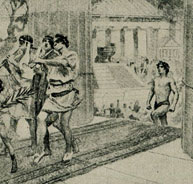 "The Greeks were the first people in Europe to attain a high degree of civilization."(1) The events in the earliest Greek Olympic Games included activities that promoted fitness in lifetime skills of running, jumping, and throwing. Perhaps the closest parallel to modern gymnastics is found in Ancient Greece in acrobatics. The acrobats, usually slave girls and not free citizens, performed somersaults, cartwheels, balancing acts and a variety of stunts for entertainment only.
"The Greeks were the first people in Europe to attain a high degree of civilization."(1) The events in the earliest Greek Olympic Games included activities that promoted fitness in lifetime skills of running, jumping, and throwing. Perhaps the closest parallel to modern gymnastics is found in Ancient Greece in acrobatics. The acrobats, usually slave girls and not free citizens, performed somersaults, cartwheels, balancing acts and a variety of stunts for entertainment only.
Gymnastics, as defined by the Greeks, was an intimate part of their education and life. During the Renaissance the Greek ideal was revived and a renewed interest in gymnastics occurred, which during the dark ages had been kept alive only by the acrobatic entertainers in the courts and in the training of knights.
The earliest gymnasium in Greece was actually a field by a stream. Later when buildings were needed, they were built as a hollow square building, which were called palestra. The three great gymnasia of Athens were the Academy, the Lyceum, and the Cynasargus and were all maintained by the state.(1) Of course, all of these sports gymnasia were for men and boys. The girls were kept secluded.


Rome had its share of games and sports. The children in early Rome played with carts, tops, hoops, stilts, and balls.(1) There was much military training of the men and boys. It seems that there was no palestra in early Rome as there was in Greece, but there were swimming contests, wrestling, boxing, running and jumping.(1)
The Circus Maximus was an arena where up to 200,000 spectators could watch the chariot races and gladiators.
In the Age of Chivalry, the knight, out of necessity, underwent strenuous physical training.
The Renaissance Era, the time between the Middle Ages and Modern Times saw a slow start to physical education and the training of boys in riding, fencing, archery, and playing ball. "Competitions were...in wrestling, running, leaping, and swimming."(1) Leading educators in the 16th and 17th centuries realized that students needed play, exercise and games. Tennis, dancing, running, riding, dumbbells, archery, and fencing were employed.
MODERN TIMES
Germany, beginning in 1774, began putting their educational concepts into practice.
 |
Johann Basedow (1723-1790) was the first to conduct gymnastics as part of education. He was the first modern writer and teacher of organized gymnastics for whom records survive.(2) He was a German, and he is credited with founding the Philanthropinum and Education of the Mind and Body.(3) |
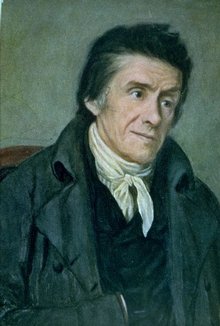 |
Johann Pestalozzi (1746-1827) greatest contribution was to general education, but he was the founder of free exercises and of calisthenics. (2) |
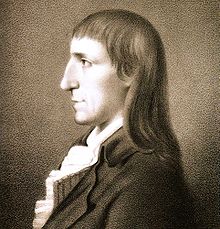 |
Guts Muth (1759-1839) (the Great Grandfather of Gymnastics) wrote many influential books including carefully chosen gymnastic exercises for girls in 1818.(2) He wrote Gymnastics for Youth, the first book on modern gymnastics in 1793. He describes the use of sloping beams, climbing poles, ladders and ropes along with the balancing beam and the swinging beam. |
| Francis Atnoros Amoros (1770-1848) Spaniard, was responsible for the establishment of gymnastics in France. His methods were formal and were patterned after those of Pestalozzi. May have been the first to use the trapeze, rings, ropes and inclined boards. (1) | |
 |
Phokion Clias (1782-1854) Swiss teacher who promoted gymnastics in England and France as well as in Switzerland.(1) |
| Franz Nachtegall (1777-1847), formed a gymnastic club, opened a private gymnasium and through his success encouraged the government to incorporate training into its school curriculum. His gymnastics program in Denmark emphasized mass calisthenics, mass vaulting and drills using dumbbells and balls. | |
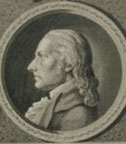 |
Gerhard Vieth (1759-1839) published a book of exercises. He also described the balance beam, jumping ropes, climbing ropes and poles, the horse, the table and the buck. He wrote of vaulting over horizontal poles at different heights.(2) |
 |
In Scandinavia, Per Henrik Ling (1776-1839) was one of the great gymnastics leaders and called the "Father of Swedish gymnastics". Hundreds of students would participate in mass floor exercise drills. |
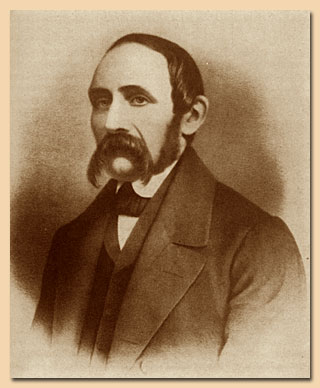 |
Adolph Spiess (1810-1858) (Father of School Gymnastics) German who taught gymnastics to his classes in Switzerland and added marching and free exercises to music. |
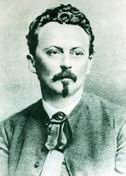 |
Miroslav Tyrs started the Sokol in Czechoslovakia in 1862. (Sokols, like the German Turners and are still active in America, but are more of a social group for Czech immigrants to this country.) |
| Archibald Maclaren (1820-1884) was an English educator who used many of Friedrich Jahns' ideas in his country.
|
|
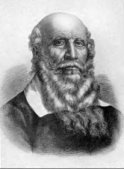
|
Friedrich Ludwig Jahn (1778-1852) (The Father of Gymnastics and The Turn Father) started the Turners in Germany and influenced many gymnastics leaders, including Francis Lieber (1800-1872) who emigrated to the U.S. in 1824. Two other disciples of Jahn, Charles Follen and Charles Beck, along with Lieber, started gymnastics in America.
Jahn established the first public turnplatz in Germany in 1811. This was an open field where men and boys would participate in mass exercises as a group. The purpose of the turnplatz was to make able-bodied men physically fit to defend their country. Turnverein is a type of society or organization that emphasized gymnastics exercise, but also dealt with social and patriotic functions. These were very popular in Germany and were useful in opposing the French domination of Germany and they had official approval by the government of Germany. They were organized throughout Germany. After Napoleons fall, they began to dissolve as the government thought they were too liberal. In 1818 the Turner organization was outlawed, and Jahn was arrested the following year. But the members remained loyal and started turnvereins in other countries including America. In Germany, in 1860, there was a revival of the organization but they stayed out of politics Jahn invented several pieces of equipment: the horizontal bar, parallel bars, side horse, and the vaulting buck.(3). By 1860, there were over 150 Turnvereins in America. By the 1940's, many of our outstanding gymnasts had gotten their start in Turner clubs, and some are still in operation today. The Olympic Games were revived in 1896 in Athens. |
Bibliography:
1. A Brief History of Physical Education: Emmett Rice. 1926; A.S. Barnes and Co.
2. Gymnastics and Tumbling: Price, Keeney, Giallombardo, Phillips. U.S. Naval Institute. 1943; George Banta, Co., Inc.
3.Judd, DeCarlo, Kern. Exhibition Gymnastics. 1969. Associated Press, New York.
 Charles Beck
Charles Beck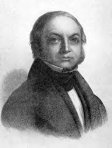 Charles Follen
Charles Follen